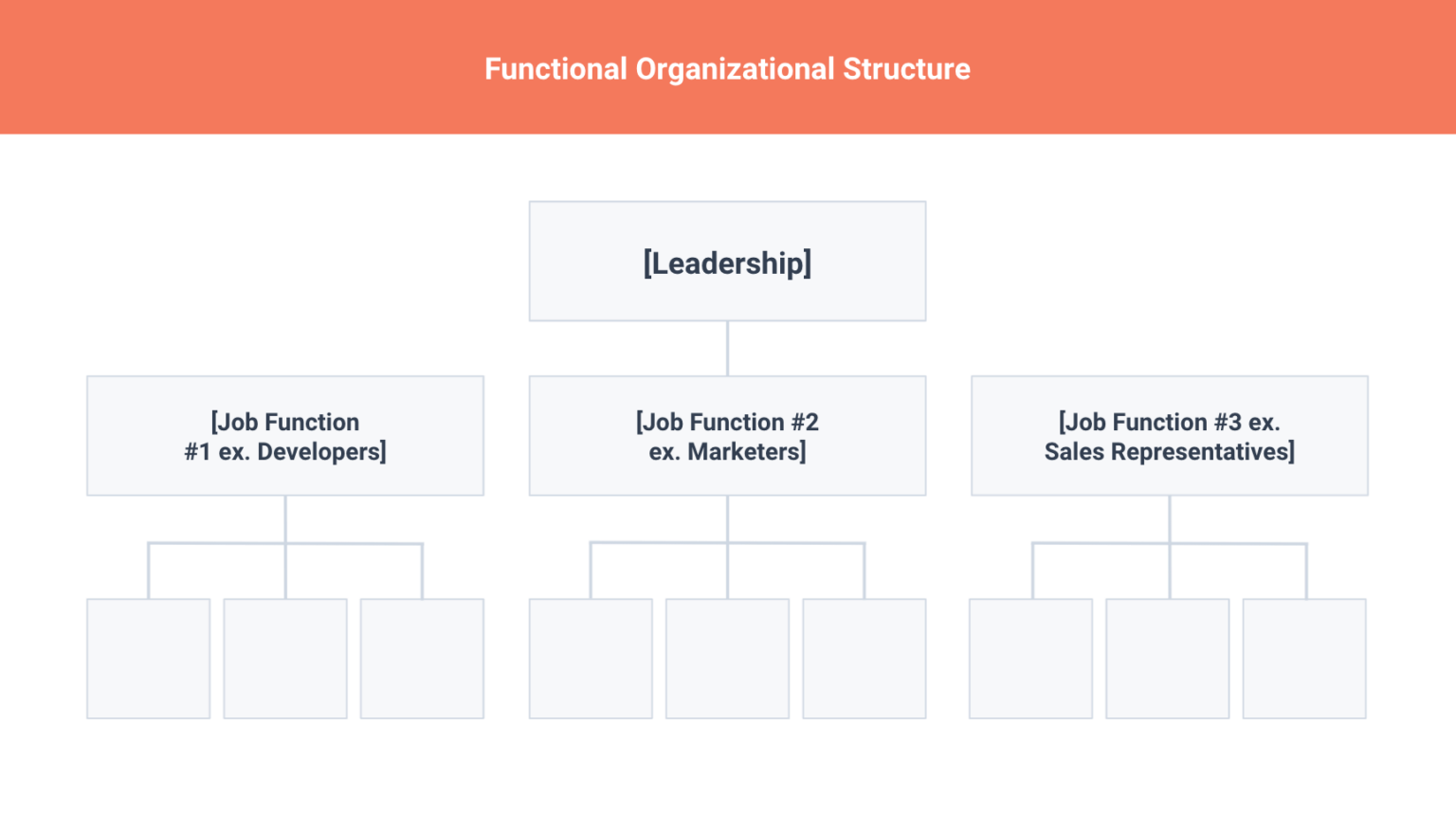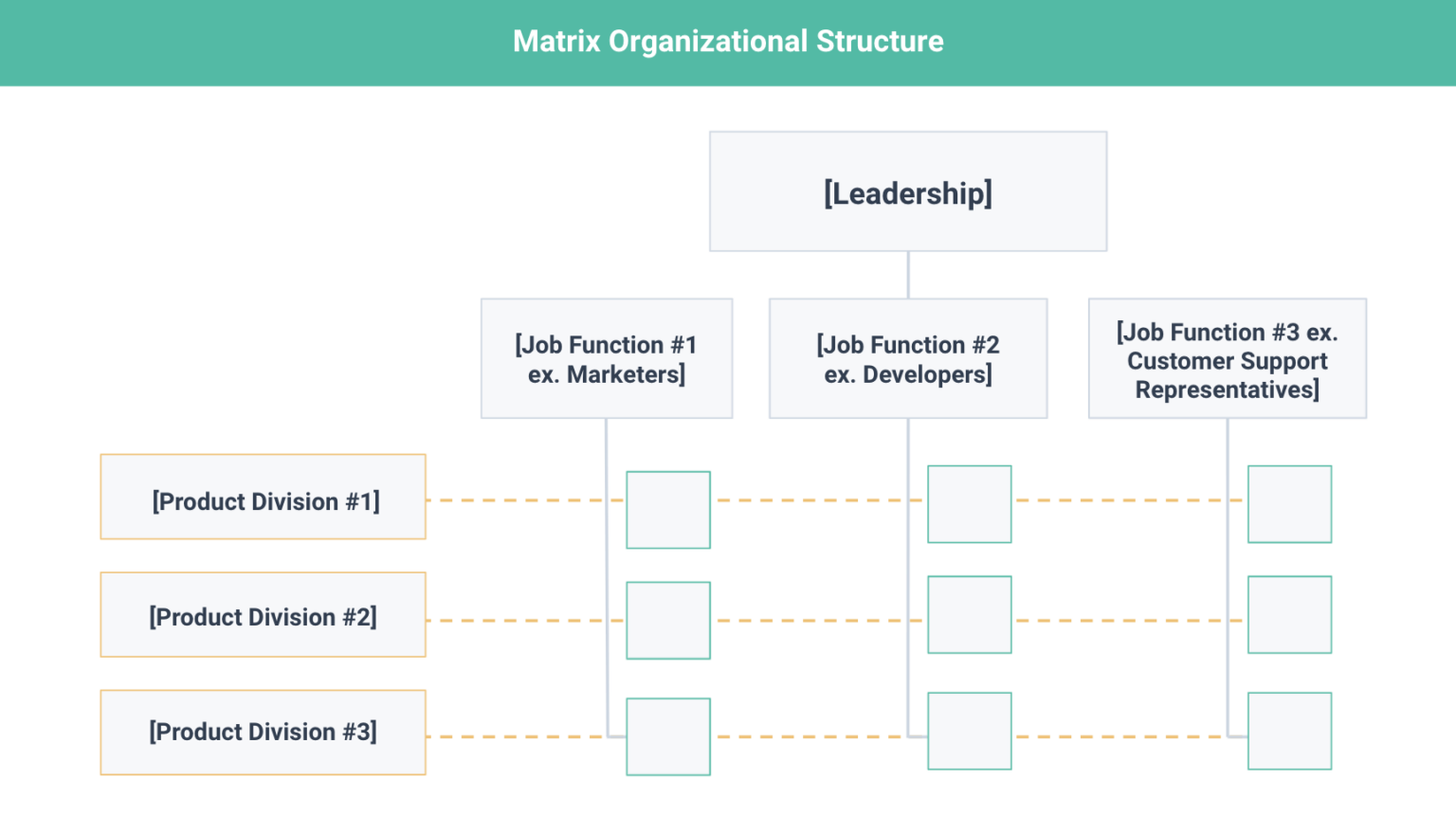Which Organizational Structure is Better for Your Business?
January 31, 2023 8 min read

The key to effective business collaboration isn’t contingent on the type of personality that your team exhibits. It doesn’t depend on what your company does or what it’s selling. While all those areas may contribute in some way, they aren’t solely responsible for achieving effective collaboration.
It may surprise you to learn that organization is a crucial factor in determining whether or not your business will be able to collaborate effectively. The truth is, the more products and people added to the equation, the harder it is to keep everything together. Therefore, a company looking to grow must develop a configured system early on.
Enter: The Organization Chart.
What is an Organization Chart?
Consider this the roadmap of your company culture. An org chart lays the groundwork for the way a business functions and how roles are maintained. It helps to define three key elements:
- Chain of command
- Span of control
- Centralization
These types of systems determine which tasks are delegated and where work is approved. It establishes how proposals, requests, and issues are communicated and the line of authority to manage them.
An org chart will arrange the decision-making process and answer the how, who, and where of daily operations. It guides everyone on accountability and creates the foundation for corporate growth. Not only that, but it also provides your team with a clear outline of who supports whom.
Types of Org Charts
Companies can either be flexible and organic, or structured in a more mechanical and departmentalized manner. Each method has sociological advantages and disadvantages. There are several different types of org charts that fall on the spectrum, and it’s important to understand the flow of each before deciding which is better for you.
It’s also crucial that you have a sense of what kind of company you want to be. If you want to create a more autonomous environment, one that is more linear, then your org chart will look very different from that of a company focused on who manages whom and who’s in charge of what department.
1. Hierarchical Structure
This type of organization (also called a bureaucratic or mechanical structure) is known for having a narrow span of control that follows more traditional patterns of organization.
Below is an example of what this organizational chart might look like:
One or two entities ultimately make final decisions. Specific standards and practices are used to govern every aspect of decision-making.
- A clear chain of command
- Controlled accountability
- High level of specialization
- Coordinated policymaking
- Centralized decision-making
A mechanistic organization chart is based on top-down management. There will always be someone seated at the highest possible spot. The hierarchical structure can be organized based on a variety of positions in a company involving:
- Function
- Market
- Geography
- Product line
- Process
A bureaucratic org chart is very formal and highly centralized. Although it is an efficient form of management, it can stifle organic growth and deter employee engagement. Other disadvantages include:
- Limited collaboration between departments
- Can be a hindrance to creativity and agility
- Slows the decision-making process
- Duplication of activities and resources (less communication)
- Missed opportunities to network
It may be hard for a company to keep up with a swiftly changing market if their organization is structured too tight. In this model, teams only collaborate as needed. If your company involves a market that shifts arbitrarily, an organic org chart may work better.
2. Organic (Flat) Structure
On the other end of the spectrum is an org chart that is defined through organic positioning. Authority is flexible, and the autonomous environment promotes a free flow of information. Below is an example of what this organizational chart may look like:
Benefits to an organic (flat) structure include:
- More balanced decision-making
- Increased opportunity to share resources
- Less hierarchy-related pressure
- Spurs innovation and productivity
- Consistent communication and collaboration
An org chart with this type of construction is not a tiered pyramid, like hierarchical arrangements. Instead, it can look like a flat structure with limited levels of management. All employees are only a few steps away from leadership.
An organic structure yields a decentralized decision-making process where final choices are made within a group or team. This may not work for every business. Especially if you are looking to scale quickly. A company may need a central person to make quick decisions. Other disadvantages to a flat org chart include:
- A confusing approval process
- Difficult to identify authority
- Unclear responsibilities
- Lack of accountability
- Hard to settle disagreements
If you choose to have a flat organization, best practice is to have a marked tier of management or group of employees. This way, executive decision-making can happen fast when necessary.
3. Functional Organization Structure
As the name suggests, a functional organization structure groups individuals based on their job functions. The structure is centralized and significantly overlaps with the traditional line or hierarchical structure, offering more communication channels.
Each department has its director, who reports directly to the CEO. Besides, the directors have employees over whom they have direct authority. In addition, the lines of communication seem open, so the directors can send or share information with managers they don’t directly control.
Benefits of functional structure include:
- Scales easily and is applicable for organizations of all sizes.
- Allows a high degree of specialization
- Enhances self-sufficiency and innovation
For example, if your organization adopts a functional chart, you’d put all salespeople, marketers, and customer service staff in three separate departments. Putting employees in skill-based departments allows employees to develop specific, specialized roles. However, since the org chart is mechanistic in nature, it can impede an employee’s growth.
Beyond that, the functional structure can create barriers between departments or functional cohorts. Other disadvantages include:
- Limits people’s knowledge to departmental boundaries
- Inhibits communication among different departments
4. Matrix Structure
Unlike most organizational structures, the matrix structure deviates from the traditional line structure. It’s a hybrid org chart that combines functional and project-based structures.
For example, the leader would have direct authority over representatives from traditional functional groups, say, marketers, developers, and salespeople. And then, the representatives report to respective functional managers in their areas of specialization. In other words, in a matrix structure, there are two bosses.
Benefits of Matrix organizational structure include:
- Team leaders are at liberty to choose the best talent for each project
- It assigns different responsibilities for each employee
- It enables employees to hone skills outside their area of specialization
Even though the matrix organization structure works, its true nature can also be a source of multiple challenges. Some of the disadvantages of this structure include:
- It’s prone to frequent changes
- It causes a conflict of interest between the needs of the department and project organization.
Other Organizational Structures
The four structures mentioned above are some of the most common. However, there are other structures out there that companies use and find efficient to their process and needs.
Other organizational structures worth a mention include:
- Market-based divisional structure – Responsibilities and job roles are based on the market being served.
- Product-based divisional structure – Responsibilities and job roles are based on the products being created and marketed.
- Process-based structure – Designed around the activities each employee performs, as well as how those activities interact with one another.
- Circular structure – Instead of a hierarchical structure, this one focuses on leadership from within spreading outward.
- Geographical divisional structure – This structure works best for companies in various regions and geographical locations. While each is part of a larger entity, they run the individual locations according to what works best for that particular division or local requirements.
- Network structure – This structure is pretty non-conventional. It’s less focused on hierarchy and is flat and flexible. Managers within this structure control relationships both internal and external to the company.
The Benefits of Organizational Structure
Organization charts can be applied to a business of any size, in any industry. As a company grows, this type of system helps new employees understand how processes are managed. It defines corporate culture and keeps daily operations running efficiently.
An organizational structure will visualize workflows to forecast future business. It enables a company to pivot or shift leadership as the brand evolves. There is no right or wrong way to organize your business. Some establishments may require rigid and centralized foundations, while others flourish with flexible and decentralized environments.
Factors to Consider When Selecting an Org Chart For a Remote Team
There’s no doubt that the COVID-19 pandemic strongly affected the world of remote work. During the pandemic, 70% of employees in the U.S. worked from home.
Remote work seems to have had a lasting impression on most employees, 80% of whom expect to work from home at least three times a week after the pandemic. If there was ever a question if your organization should adopt remote work, the time is now.
Keep in mind, embracing hybrid teams or allowing fully remote work may change how your company manages its employees. For this reason, you’ll need to entwine your remote company’s culture with a befitting organizational structure. Doing so lets employees fully understand the direction of your organization and how they can contribute to reaching the set goals.
Having a formal organizational structure helps hold remote employees to account and manage projects without a hitch. And when selecting an organizational structure that would pair nicely with the remote work model, pick a structure that:
- Boost communication
- Fosters collaboration
- Allows managers to monitor progress via regular check-ins
- Clearly outlines who will be held accountable for what.
Why It’s Important to Understand Organization Structure
One of the key reasons salespeople in the B2B niche spend a lot of time looking for decision-makers is that they don’t understand the internal structure of the prospective organization. The org chart helps you know exactly who’s in control and can make closing a sale much easier.
Organizational structure can also be helpful in account-based marketing tactics. Consider, for example, a case where you’re selling full-service marketing, sales, and customer service platform. You’ll require departmental heads to give the “go-ahead” for the sale to go through.
In this case, an org chart helps you pinpoint each of your key accounts, the position they hold, and how the installation of the software might affect them. This way, your sales and marketing teams can prepare a pitch that hits the nail on the head and present it to the decision-makers.
Select an Org Chart Based on Business Needs
Org charts are not set in stone. If one isn’t working, change up the workflows. In the real world, the solution lies somewhere in between. Companies typically choose a hybrid version of a hierarchical and organic chart. Try borrowing elements from different structures.
Ultimately, it’s about daily function, brand identity, and employee satisfaction and productivity. No matter the type, a well-defined organizational structure is always critical for business development.










